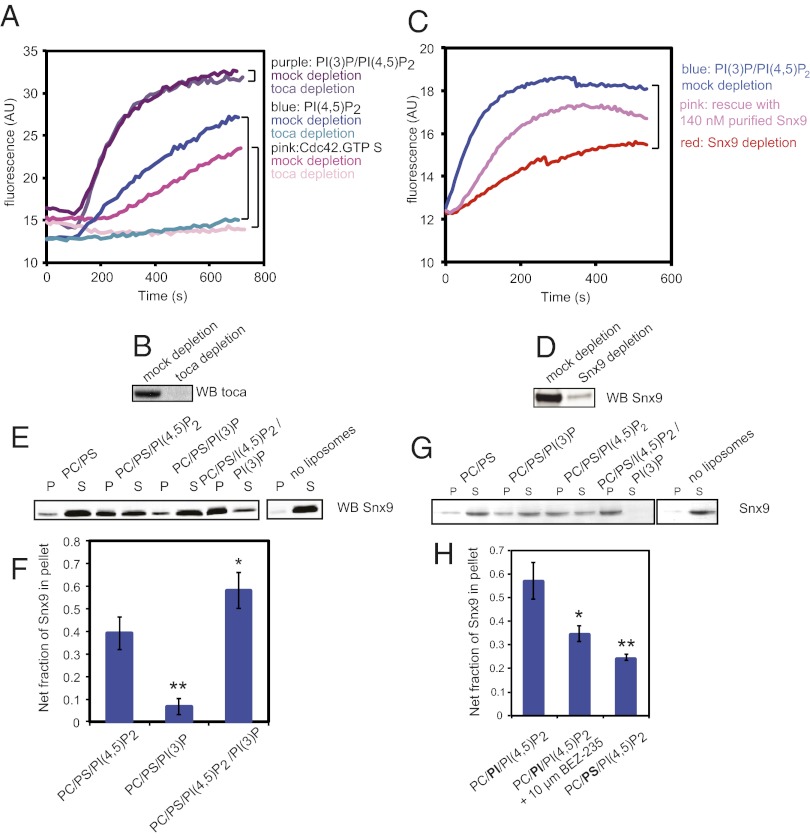Fig. 6.
PI(3)P/PI(4,5)P2-containing liposomes stimulate actin polymerization by recruiting additional N-WASP and Arp2/3 complex to the liposome surface via Snx9. (A) Pyrene actin assay in response to GTPγS.Cdc42, PI(4,5)P2, or PI(3)P/PI(4,5)P2 from mock-depleted or toca-1–depleted extracts showing that PI(3)P/PI(4,5)P2 stimulates actin polymerization independently of toca-1. (B) Western blot of toca-1 in mock- and toca-1–depleted extract used showing effective immunodepletion. (C) Pyrene actin assay in response to PI(3)P/PI(4,5)P2 from mock-depleted extract, Snx9-depleted extract, and Snx9-depleted extract supplemented with 140 nM purified Snx9. (D) Western blot of Snx9 from mock- and Snx9-depleted extract showing effective immunodepletion. (E) Sedimentation of Snx9 from extracts with indicated liposome compositions showing that it binds preferentially to liposomes containing both PI(3)P and PI(4,5)P2. (F) Quantification of Snx9 that is pelleted in the liposome compositions in E, adjusted for binding to control PC/PS liposomes alone, determined by Western blotting. *P = 0.037 and **P = 0.0022 are significant differences by t test. Data are representative of three independent experiments; error bars are SD. (G) Sedimentation of purified Snx9 with indicated liposome compositions showing that it binds preferentially to liposomes containing both PI(3)P and PI(4,5)P2. (H) Liposome sedimentation assay showing the quantification of Snx9 in extract pelleted in PC/PI/PI(4,5)P2 in the absence or presence of 10 μM BEZ-235, and in control PC/PS/PI(4,5)P2 liposomes. *P = 0.037 and **P = 0.0061 indicate a significant and very significant difference in binding relative to PC/PI/PI(4,5)P2 liposomes alone by t test. Data are representative of four experiments; error bars show SEM.

